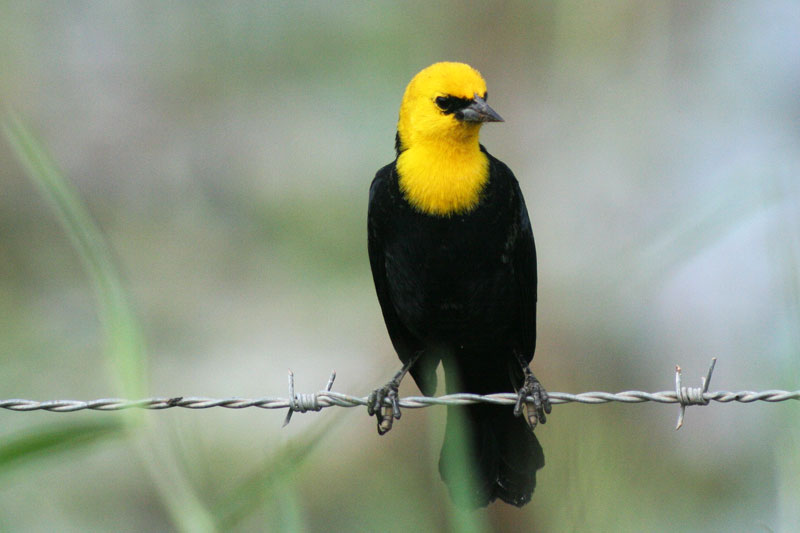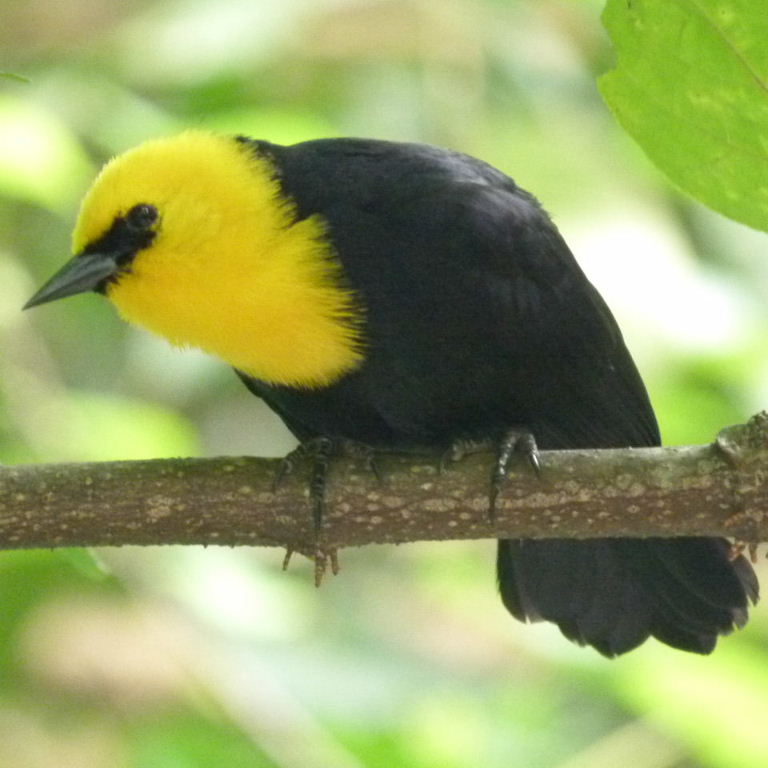
Agelaius icterocephalus
TAXONOMY
Oriolus icterocephalus Linnaeus, 1766, Cayenne. Two geographically
distinct forms are recognized.
OTHER COMMON NAMES
French: Carouge а capuchon; German: Gelbkopfstдrling; Spanish:
Turpial de Agua.
PHYSICAL CHARACTERISTICS
6.5–7 in (17–18 cm); female 0.8–1.1 oz (24–31 g), male 1.1–1.4
oz (31.5–40 g). Sexually dimorphic in color. Males are black
with a yellow hood and black around the bill. Females are
grayish olive above, and have a brownish belly, flecked with
black, and a dusky yellow hood, with the yellow on the throat
and the stripe over the eye brighter.
DISTRIBUTION
Resident of northern South America and along the Amazon
River, from northern Colombia to central Brazil, east to northeastern
Peru.
HABITAT
Freshwater marshes and tall, wet grasslands. Although characteristically
a bird of the lowlands, they are found to about
8,500 ft (2,600 m) in the Andes of Colombia.
BEHAVIOR
Territorial during the breeding season. Males display to other
males using a “song-spread” display, much like that of the
North American red-winged blackbird. Males approach females
with a distinctive fluttering flight; receptive females follow
males to nests constructed by the males. During all seasons
they are commonly seen in small loose flocks; large numbers
may congregate in roosts. During the breeding season, males
form colonies in marshes and start building nests.
FEEDING ECOLOGY AND DIET
Yellow-hooded blackbirds feed in marshes or in pastures,
where they eat seeds and capture invertebrates.
REPRODUCTIVE BIOLOGY
Successful males mate with up to five different females in a
single season. Males build a nest in emergent aquatic vegetation;
the female adds the lining to the nest after the pair is
formed. Mated males stay with their mate until incubation begins,
then they build another nest and seek an additional mate.
Generally 2–3 eggs are laid in May–October in Trinidad and
October–November in Venezuela. Incubation 10–11 days;
young fledge at about 11 days.
CONSERVATION STATUS
Not threatened. They are locally common.
SIGNIFICANCE TO HUMANS
They commonly forage in rice paddies and other agricultural
lands, and cause some crop damage.
Other popular Animals
Photo Gallery of - Yellow-hooded blackbird




 Animalia Life
Animalia Life